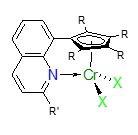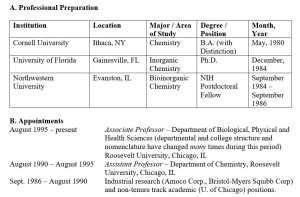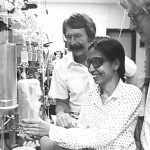About the Seminar
Molecular complexes of early transition metals are of interest as catalysts for the production of fine chemicals or polymers. One important feature of some such complexes is their paramagnetism, which can be studied by nuclear and electron paramagnetic resonance (i.e., NPR and EPR) spectroscopy. In cases where there is more than one unpaired electron (S > 1/2), zero-field splitting (ZFS) can result. This phenomenon may lead to “silence” in conventional (i.e., X-band) EPR, making measurements at high magnetic field and microwave frequency (i.e., HFEPR) necessary. We describe spectroscopic, and associated computational, studies on two types of molecular complexes of chromium.
The first described is a chromium(IV) complex coordinated by a bulky siloxide ligand.1 This complex is a model for some aspects of silica-supported Cr-based catalysts, e.g., the Philips catalyst.2 Cr(IV) (3d2, S = 1) is relatively uncommon and detailed computational studies on a series of Cr(ERn)4 species (E = C, N, O, F; n = 3, 2, 1, 0), as well as HFEPR of the siloxide are described to provide insight into the electronic structure and potentially the catalytic properties of these species.
The second system comprises chromium(III) (3d3, S = 3/2) supported by a rigid, quinolone donor-functionalized cyclopentadienyl ligand (see Figure).3 These complexes, where R = Me, Ph and X = halides, serve as catalysts for alkene polymerization. They give well resolved NPR spectra that are dominated by the Fermi-contact shift contribution to the overall chemical shift, however, a complete experimental analysis is possible only if the g-tensor and ZFS parameters have been obtained, namely by EPR. HFEPR spectroscopic investigation of several of these organochromium(III) complexes provides definitive values for these spin Hamiltonian parameters for analysis of the NPR spectra. These results are also correlated to recent theoretical studies on the electronic structure of related systems. 
The effectiveness of applying paramagnetic resonance techniques to high-spin early transition metal complexes is a potentially broadly applicable result of these studies.
References
- Marshak, M. P.; Nocera, D. G., Chromium(IV) Siloxide. Inorg. Chem. 2013, 52, 1173–1175.
- Fong, A.; Vandervelden, C.; Scott, S. L.; Peters, B., Computational Support for Phillips Catalyst Initiation via Cr–C Bond Homolysis in a Chromacyclopentane Site. ACS Catal. 2018, 8, 1728–1733.
- Ronellenfitsch, M.; Gehrmann, T.; Wadepohl, H.; Enders, M., Improving 1-Hexene Incorporation of Highly Active Cp–Chromium-Based Ethylene Polymerization Catalysts. Macromolecules 2017, 50, 35–43.
About the Speaker




